VI Systems participated in many European projects with wide range of Partners.
SpinDataCom (01.06.2025–30.11.2028)
SpinDataCom (01.06.2025–30.11.2028)
Interdisciplinarity of SpinDataCom
Driven by the global demand for high-bandwidth and low-power communication, and the strategic importance of space technologies, SpinDataCom aims to lay the foundation for next-generation data networks.
The technology is based on using spin-polarized vertical-cavity surface-emitting lasers (spin-VCSELs). Remarkably, the consortium recently discovered that the injection of spin-polarized carriers in semiconductor lasers enables an ultrafast modulation of circular polarization of the emitted light (>200GHz), much faster than the modulation of light intensity in a single conventional laser (20-30GHz), while at the same time supporting an ultralow power consumption. The spin-photon conversion provides a highly efficient information coding method based on circularly polarized light, even on a single photon, allowing information transfer with very weak light.
Electrical spin injection and modulation are crucial to satisfy the criteria of a high-energy efficiency, small volume, light weight and high reliability for space applications. In parallel, it will also greatly benefit the development of various advanced technologies on Earth, such as polarization-controlled single-photon sources for optical quantum communication and computation, neuromorphic computing for artificial intelligence, ultrafast and high-efficient optical transmitters for data centres or Light-Fidelity applications, etc.
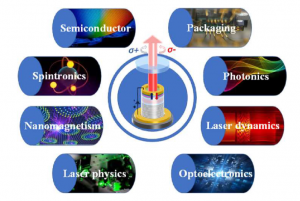
VIS leads packaging and high-frequency testing of electrically pumped spin-VCSELs and develops a compact integrated package capable of supporting high-speed modulation to demonstrate data transmission at 40 GHz using free-space links. The project also explores employing polarization oscillations above 100 GHz as a new coding method, enabling ultrafast data rates with significantly lower power consumption than conventional lasers.
VIS is proud to cooperate in this project with following partners:
- Centre National de la Recherche Scientifique CNRS (Paris, France)
- Thales (Meudon, France)
- Ruhr-Universität Bochum (Bochum, Germany)
- Technische Universiteit Eindhoven (Eindhoven, Netherlands)
- Universite de Rennes (Rennes, France)
- Sveučilište u Rijeci (Rijeka, Croatia)
The project is funded by the European Innovation Council and SMES Executive Agency (EISMEA) in the frame of Horizon Europe Framework Programme (HORIZON) under project number 101184694. The total funding is 3M€.
COHORT (01.10.2024–30.09.2027)
COHORT (01.10.2024–30.09.2027)
COHerent Optical Resonance Transmitters
The goal of the COHORT project is to develop novel components based on multi-aperture coherent vertical-cavity surface-emitting laser arrays (MA-VCSELs). Optimized three-dimensional theoretical simulation software capable of handling non-cylindrical shapes of the MA-VCSEL apertures (Fig. 1) and the latest experimental methods including streak camera studies of ultra-fast dynamics will be employed to design components with groundbreaking properties for applications in data communications, particularly radio over fiber (ROF), and industrial sensing.
In data communications, precise design enables stable photon-photon resonances (PPR) for modulation at ultra-high speeds (over 50-100 GHz), leading to significant cost savings in the deployment of mm-Wave cells for new generations of wireless communication and for generation of high-quality coherent THz signals at low cost and energy consumption.
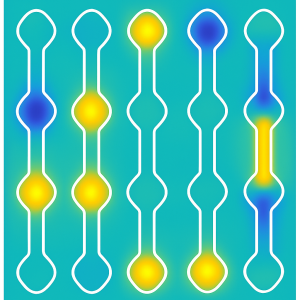
Fig. 1. Coherent optical supermodes in MA-VCSEL
VIS is proud to cooperate in this project with following partners:
- Ruhr-Universität Bochum, Lehrstuhl für Photonik und Terahertztechnologie (Bochum, Germany)
- Julight Srl (Pavia, Italy)
- Politecnico di Torino, Dipartimento di Elettronica e Telecomunicazioni (Turin, Italy)

The project is co-funded by the European Union via Eurostars-Eureka Network under project number E! 6226 COHORT and by the German Federal Ministry of Research, Technology, and Space via the Project Management Agency Deutsches Zentrum für Luft- und Raumfahrt (DLR) under the project number 01QE2432A. The total funding is 921T€.
IC2020 (01.11.2020 – 31.11.2021)
IC2020 (01.11.2020 – 31.11.2021)
INNOSUP Project IC2020
The Horizon 2020 “Innovation in SMEs” (INNOSUP) programme of the European Union aims to test new approaches for better innovation support through funding opportunities for innovation actors across Europe. It consists of innovation-support measures designed to provide opportunities to Member States and regions to enhance their services to SMEs through collaboration, peer-learning, and testing new approaches that facilitate SMEs’ access to customers, capital and competencies. VI Systems completed succesfully the innovation project in the field of next generation electro-optical interconnects for data rates of 224 Gb/s.

OVERSCAN (01.01.2018 – 31.12.2020)
OVERSCAN (01.01.2018 – 31.12.2020)
The optical fibre vibration and deformation sensor based on multicore optical fibre and VCSEL array technologies

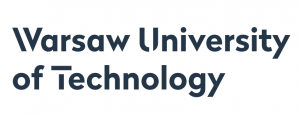

Development of vibration and deformation sensor that is capable of distinguishing deformation direction within 360 degree range, its amplitude with µm sensitivity and deformation frequency with range from 1 Hz up to 50 000 kHz and potentially more. Such sensor will possess all advantages associated with optical fibre sensor technology.

This project is co-financed by the European Regional Development Fund through the program for promotion of research, innovation and technology ProFIT of Investment Bank Berlin IBB.


Fast Bits (01.05.2017 – 30.04.2020)
Fast Bits (01.05.2017 – 30.04.2020)

Fast Bits - Elektro-Optisches 100-Gbit/s-Übertragungssystem
Einkanaliges, latenzminimiertes 100-Gbit/s-Übertragungssystem als Enabler von echtzeitfähigen Anwendungen bis 400G für Datenzentren, 5G-Infrastruktur, Industrie 4.0, Cloud und Internet der Dinge (IoT).

Anforderungen für Echtzeit:
- Reduzierte Latenz: Vernetzungen von System oder zur Cloud erfordern Reaktions- und Latenzzeiten im μs-Bereich.
- Gesteigerte Datenraten: ≥100 Gbit/s nötig für Übertragung großer Datenmengen im sub-ms-Bereich
- Kostengünstige Single-Chip-Lösung: Bisher sind noch verschiedene Technologien zur Systemrealisierung notwendig.
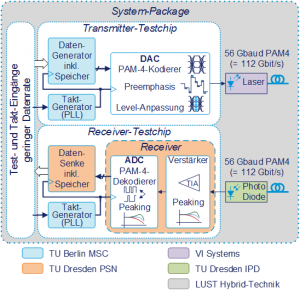
![BMBF_CMYK_Gef_M [Konvertiert]](https://v-i-systems.com/wp-content/uploads/2016/01/BMBF_gefoerdert_2017_en-300x206.jpg)
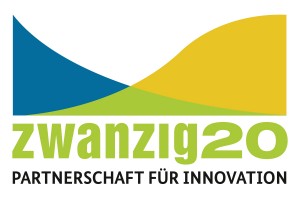
PHOTONIX (01.06.2015 – 31.05.2017)
PhotoniX (01.06.2015 – 31.05.2017)

Photonic Transmitters for Optical Networks and Interconnects in energy-efficient datacenters, supercomputers and home based on VCSELs
To match the demand of the productivity of modern computing systems, which is growing three orders of magnitude per decade, the single interconnect channel bit data rate should double each 2.5 years. Since 2012 energy-efficient optical links made of multimode fibers (MMF) powered by Vertical cavity surface-emitting lasers (VCSELs) are used in a single rack of supercomputer. Due to its small size, circular surface emission pattern, low operating current and a narrow spectrum VCSELs result a low cost, energy-efficient optical modules.
The way to match the speed upgrade is to apply advanced nanotechnology concepts:
- Properly designed ultrathin strained narrow gap insertions as gain medium drastically enhances the modulation bandwidth at the same current;
- Introducing of strained barriers preventing the nonequilibrium carriers’ escape from the gain region allows further improvement of the modulation bandwidth and reliability;
- Optical design by oxide-confined aperture induced diffraction allows single mode operation extending the transmission length.
VI-Systems GmbH was first to pioneer and ship VCSELs transmitters up to 40Gb/s over 100m. 54Gb/s OOK transmission significantly exceeding 1 km of multimode fiber is achieved with pilot devices. VIS will commercialize its novel interconnect technology and extend it up to 50Gb/s per channel.
This project has received funding from the European Union’s Horizon 2020 research and innovation programme under grant agreement No 666866.
About Horizon 2020 SME Instrument
As part of the Horizon 2020 program, the European Commission is hand-picking potentially disruptive businesses to invest and support as part of the SME Instrument. More information can be found on the Internet at http://ec.europa.eu/easme/en/horizons-2020-sme-instrument

ADDAPT (01.11.2013 – 30.04.2017)
ADDAPT (01.11.2013 – 30.04.2017)

Adaptive Data and Power Aware Transceivers for Optical Communications
Existing optical networks are driven by dynamic user demands but operate statically at their maximum performance and do not offer much adaptability. Thus the links are not energy-efficient. ADDAPT aims at the development and technology take-up of dynamic transceiver subsystems. By implementing performance and power adaptivity from system down to optical device, electrical circuit and transistor level, flexible energy-efficient optical transmission links are enabled. Driven by control units including smart algorithms, the devices can be tuned from 8 to 56 Gb/s. Novel adaptive directly modulated lasers and photodetectors are developed to allow self-aligned low-cost waveguide assemblies with minimum optical power losses. VIS designs epitaxial wafers and provides material for VCSEL and PINs. First single mode (>30db SMSR) VCSELs at >1.5mW having a modulation bandwidth >27GHz are demonstrated.
The project is funded by the European Commision through the Seventh Framework Programme (FP7). Project Nr. 619197.
Partners:
- Technische Universität Dresden
- VI Systems GmbH, Berlin
- IBM Research GmbH, Rueschlikon
- Argotech AS, Nachod
- Politechnika Warszawska, Warsaw
- Compound Semiconductor Technologies Global Limited, Glasgow
- Primetel PLC
- Tyco Electronics Nederland BV
NEWLED (01.11.2012 – 30.10.2016)
NEWLED (01.11.2012 – 30.10.2016)

Nanostructured Efficient White LEDs based on short period superlattices and quantum dots
NEWLED will develop high efficiency and high brightness monolithic and hybrid all-semiconductor WHITE light-emitting GaN-based diodes. NEWLED should also enhance the efficiency of bright red and yellow InGaAlP/AlGaAs LEDs by bandgap engineered superlattices. Novel light extraction approaches will target advanced directionality and colour adjustment. Values of > 200 lm/W in the exploited warm white LEDs are targeted as well as the realization of a colour rendering index (CRI) of greater than 95. Advanced packaging will enable effective heat dissipation and light management. The devices will have immediate applications in automotive, industrial lighting and displays industries.
The project is funded by the European Commision FP7-ICT - Specific Programme "Cooperation": Information and communication technologies. Project Nr. 318388.
Partners:
- University of Dundee
- Osram Opto Semiconductors GmbH, Regensburg
- Technical University, Berlin
- Ioffe Physico-Technical Institute of the Russian Academy of Sciences, St. Petersburg
- Centre National de la Recherche Scientifique, Valbonne
- VI Systems GmbH, Berlin
- Top-Gan SP ZOO, Warsaw
- Compound Semiconductor Technologies Global Limited, Glasgow
- Universita Degli Studi di Roma Tor Vergata, Rom
- M-Squared Lasers Limited, Edinburgh
- TTY-Saatio, Tampere
- Soft-Impact OOO, St. Petersburg
- Lux-Tsi Limited, Pencoed
- Vilniaus Universitetas, Vilnius
COLIBRI (01.11.2013 – 31.12.2015)
COLIBRI (01.11.2013 – 31.12.2015)
Compact Lasers with Increased Brightness
The task is to develop broad spectral range lasers suitable for frequency conversion over the complete blue-red spectral range. High power lasers and gain chips having a flat gain curve across 900-1260nm range are demonstrated at temperatures up to 150oC. Lasing at 1.26 µm is realized on GaAs substrates. Novel approaches based on the tilted wave laser (TWL) concepts enabled lasers with ultrabroad waveguides >30 µm with duo-lobe emission pattern with each lobe having a full width at half maximum below 2o. Beam quality (M2) factor ~1.4 is achieved for a single mode making two-arm external resonator geometry easy. Coherence of the waveguide-copuled stripes up to 100 µm pitch sizes is demosntrated. Fequency converted green lasing and direct red laser emission in TWL lasers is demosntrated.
Partners:
- Ioffe Physico-Technical Institute of the Russian Academy of Sciences, St. Petersburg
- VI Systems GmbH, Berlin
SEPIANet (01.07.2011 – 31.12.2013)
SEPIANet (01.07.2011 – 31.12.2013)

System embedded Photonics in Access Networks
The project aimed to develop technology solutions for embedded optical architectures in access network systems to allow significant reduction in power consumption, increased energy efficiency, system density and bandwidth scalability, which is currently unfeasible in today’s copper driven access network systems. VIS provided 850nm and 1300nm VCSELs and modules for 10Gb/s data transmission.
Partners:
- Xyratex Technology Ltd. Havant
- Fraunhofer Institute, Munich
- VI Systems GmbH, Berlin
- ILFA Feinstleitertechnik GmbH, Hannover
- TerOpta Ltd., Nottingham
- Conjuct Ltd., Livingston
Optical Link/Eurostars/Eureka (01.11.2009 – 31.12.2011)
Optical Link/Eurostars/Eureka
(01.11.2009 – 31.12.2011)

Development of integrated optical technology for short range, ultra high speed active optical data cables
In the frame of the project 10-25Gb/s single mode VCSELs and PIN chips were developed for flip-chip assembly.
Partners:
- Lionix BV, Enschede
- IHP GmbH, Frankfurt/O.
- Fraunhofer Gesellschaft zur Förderung der angewandten Forschung e.V., Munich
- Tyco Electronics Nederland BV, `s-Hertogenbosch
- VI Systems GmbH, Berlin
VISIT (01.06.2008 – 30.10.2011)
VISIT (01.06.2008 – 30.10.2011)

Vertically Integrated Systems for Information Transfer
The project focused on strategic, high-value photonic components and subsystems for scalable economic broadband access and local area networks. The central objective was research on, development, test and exploitation of system-enabling optical transmitters having a completely novel design and/or largely improved functionality as compared to the state of the art. 40Gb/s error free operation was demonstrated for the first time an chip and module levels. Digital multitoned and QPSK transmission beyond 20Gb/s was realized in current- and electro-optically-modulated devices.
Partners:
- Technical University Berlin, Institute of Solid State Physics, Berlin
- VI Systems GmbH, Berlin
- Cambridge University, Department of Engineering, Cambridge
- Chalmers University of Technology, Photonics Laboratory, Göteborg
- IPLS/Intel Ireland Ltd., Kildare
- Ioffe Institute, St. Petersburg
- Riber S.A., Bezons
- Tyndall National Institute, Cork, University College Cork – National University of Ireland
- Epinova GmbH, Freiburg
- IQE Europe Ltd., Cardiff
HiTrans (01.06.2008 – 31.05.2010)
HiTrans (01.06.2008 – 31.05.2010)

Grundlagen für hochbitratige Transceiver für Optical Interconnect Anwendungen
The project addressed optical micro-subassemblies for data trasnmission up to 40Gb/s and beyond and included bot optical componets VCSELs and PD chips, driver and amplified electronics and microassmlies permitting TO-can modules capable to temperature-invariant 28Gb/s data trasnmission up to 85oC climatic chamber temperatures. Open eye diagrams up 50Gb/s were demonstrated with VIS modules. VIS developed and protected unique microassemply package and optical coupling scheme of the optical subsassembly reaching ultimately low total power (-10dBm) for 28Gb/s trasnmission at bite-error-ratio 1E-12.
Partners:
- VI Systems GmbH, Berlin
- IHP Frankfurt/Oder
- EZconn Europe GmbH, Berlin
- Technical University, Berlin
 Vertically Integrated Systems
Vertically Integrated Systems Vertically Integrated Systems
Vertically Integrated Systems